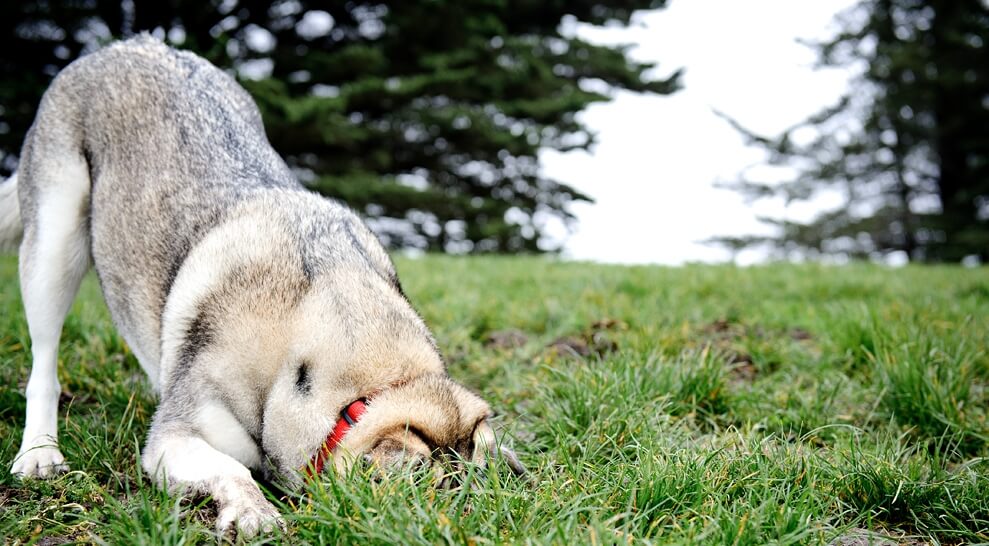Toxic Barf
Q: What happens when you mix a semi-comatose dog, gopher poison, a phosphine based rodenticide, highly toxic gas fumes, dog barf, and a room full of vets?
A: A toxic freak show that will leave vets gasping for air and as sick as dogs.
Dogs who accidentally eat a commercial poison to combat gophers and moles can emit a toxic gas that can sicken veterinary staff, a new report indicates.
Experts at the U.S. Centers for Disease Control and Prevention (CDC) say such canine gas attacks felled workers at four veterinary clinics between 2006 and 2011, and such incidents “might be underreported.” All of the workers (and dogs) involved in the four cases recovered, the report added.
Deadly Rodenticides
The cases involved zinc phosphide, a “readily available rodenticide that, on contact with stomach acid and water, produces phosphine, a highly toxic gas,” explained a team led by Rebecca Tsai, an epidemic intelligence service officer at the CDC. People who use the rodenticide are typically aiming to rid properties of burrowing rodents such as gophers or moles, and the products’ instructions say that the pellets should be inserted within the animals’ tunnels or burrows.
The Problem with Pesticides
Certain pesticides containing zinc phosphide or aluminum phosphide can release phosphine when they come in contact with water or acid. The phosphine formed in the stomach when these solid phosphides are swallowed can result in phosphine poisoning.
However, sometimes users may have simply spread the pellets on the ground, where dogs could eat them, or “even with correct application, dogs might be exposed while digging in treated areas with their paws or by consuming poisoned prey,” the CDC team noted.
Once the zinc phosphide is ingested, the dog quickly becomes sick and owners typically rush them to a vet for care. But the chemical reacts with stomach acid and water to produce the toxic gas phosphine. And it’s no picnic for the poor innocent critter the poison was intended for either. Worse, there is no antidote for phosphine poisoning.
Breathing Toxic Fumes
In one such case in Washington state last year, owners rushed a “limp,” semi-comatose dachshund to a veterinary hospital, where she vomited into paper towels. A 34-year-old veterinary technician nearby who breathed in fumes from the vomit “immediately developed pain and nausea,” the report said, but she recovered after 20 minutes.
Serious Consequences
Other cases have been more serious. In 2008, a 62-pound dog was taken to a vet clinic in Michigan after eating three zinc phosphide pellets. The veterinarian induced vomiting in the dog “in a poorly ventilated room” and quickly experienced symptoms such as “respiratory pain, headache, dizziness, chest pain, sore throat and nausea.” Still sick 15 hours later, she went to a local emergency room and was kept under hospital care overnight. Three other workers at the same clinic were also sickened; all eventually recovered. Similar events were also reported at vet clinics in Michigan in 2006 and in Iowa in 2007.
The CDC says many other cases might go undetected. “Because symptoms might only last a few hours and can resolve without medical treatment, victims might never associate symptoms with poisoning,” the researchers said.
Poisoned Pets’ Recommendations
For now, Poisoned Pets recommends that pet owners not use rodenticides or any product containing aluminum or zinc phosphide. Try alternate means of eliminating burrowing rodents or learn to live peacefully with all the other animals that deserve to right live in peace and harmony on the planet just as much as pets do.
Some things, on the other hand, are more difficult to avoid. I’ll bet you didn’t know this, but those same horrible pesticides are commonly used in the pet food and animal feed industry as a pesticide in grain storage silos where it has been used as a fumigant. How much of the toxins remain in improperly treated grains or other food stuffs, is unknown.
Cats & Poisoned Rodents
It’s also important to remember that cats can just as easily eat a poisoned rodent as well, effectively poisoning the family cat as well as the family dog, in addition to the attending veterinarians should the pet live long enough to benefit from treatment.
And in cases where pets are suspected of becoming sick by ingesting the pellets, veterinarians should always induce vomiting outdoors to disperse any toxic fumes.
Horses Barf Too
Veterinary staff treating horses with phosphine poisoning have also become sick, according to the American Veterinary Medical Association, which issued guidelines this year for vets regarding phosphine products. Besides rodent bait, these include aluminum phosphide, an insecticide used to fumigate grains and animal feed.
More information:
For more information about phosphine and phosphides can be obtained from the Centers for Disease Control (CDC), and the Agency for Toxic Substances and Disease Registry (ATSDR). If you have questions or concerns, please contact:
Agency for Toxic Substances and Disease Registry
Division of Toxicology and and Human Health Sciences
1600 Clifton Road NE, Mailstop F-57
Atlanta, GA 30333
Phone: 1-800-CDC-INFO · 888-232-6348 (TTY)
Fax: 1-770-488-4178
Email: cdcinfo@cdc.gov
The ASPCA has more on what to do if you think your pet has been poisoned. Additionally, the AVMA issued an alert about phosphine poisoning in April 2010 and provided recommendations for veterinarians.
SOURCE: CDC Journal Morbidity and Mortality Weekly Report, April 27, 2012






Pingback: Pooches’ Vomit Threat To Vets « theAfterBurnSG